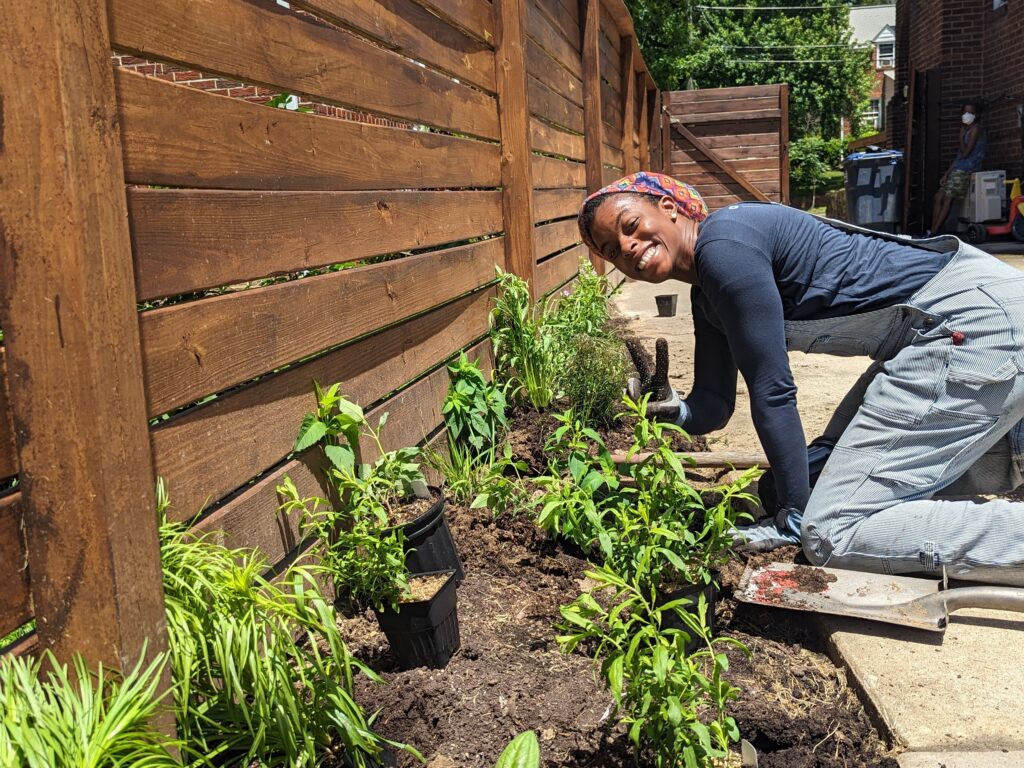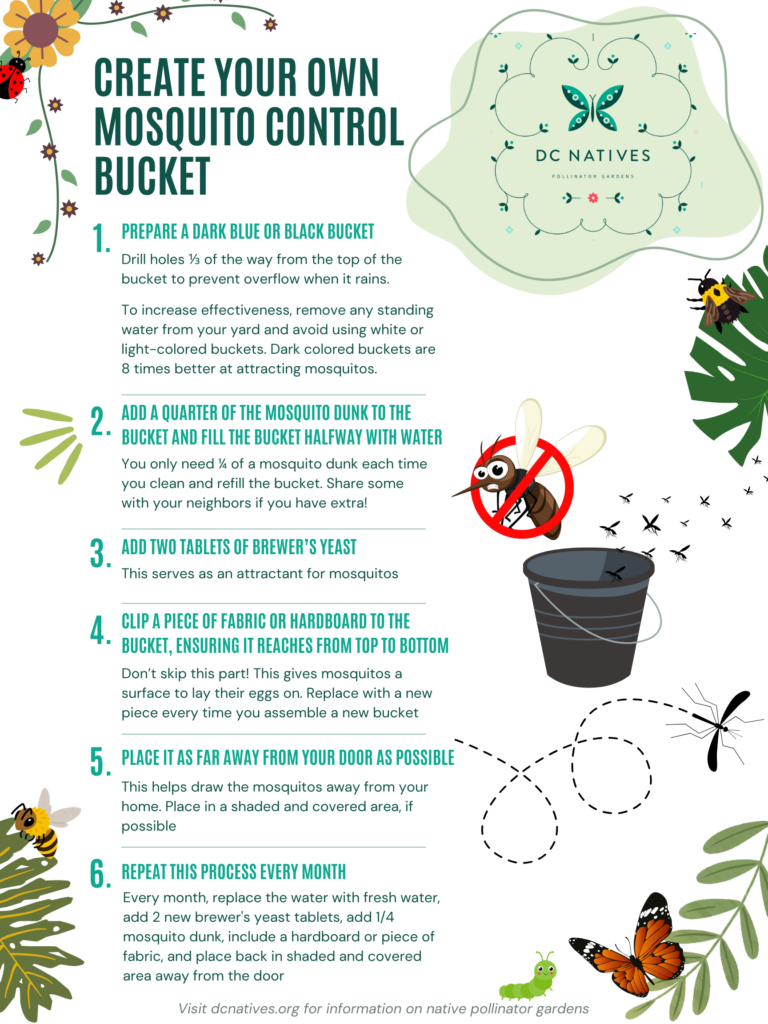Tips for Gardeners to Keep Mosquitos at Bay

At DC Natives, spring is the season that we tend to love most as all the native plants start to grow again, and the time comes to start putting most of our vegetable seeds and seedlings in the ground.
While the return of mosquitoes each spring in the District might feel like the arrival of a nemesis, it’s important to remember their ecological value. These native insects serve as a crucial food source for creatures like native bats, and surprisingly, even contribute to pollination, playing a vital role in the lifecycle of plants, serving as a food source for the dragonflies among the water lilies at Kenilworth Aquatic Gardens. Recognizing their place in the food web doesn’t mean we have to endure their disease-carrying potential and irritating bites, which can persist well into the fall. Thankfully, there are earth-friendly strategies we can employ from late April into early November to gently reduce their presence around our homes and neighborhoods.
The Lifecycle of a Mosquito
To understand how to mitigate mosquitoes, you have to know their life cycle. Most mosquitos need fresh water that has stagnated in order to reproduce, which is why you find them thriving near ponds, puddles, in the base of planter pots, bird baths, or any other spot that has water that has been sitting for some time. Mosquitos are also most active in early morning and late evening.
After mating, the female mosquito lays her eggs in the stagnant water. Soon after the mosquito larvae hatch from the eggs and eat microorganisms in the water in order to grow. Within two weeks the mosquitos change into non-feeding pupa. Then, in just a few days a fully grown adult mosquito emerges. The males feed on nectar from the garden, but the females feed on nectar but also blood in order to grow their eggs.
Introducing the “Bucket of Doom” to Control Mosquitoes
Many methods exist to help reduce or control mosquitoes. A key step in the process is to remove all standing water around your property. Turn empty plant saucers or containers over, freshen up the water in your bird bath regularly, and pour out any residual water that collects in these outdoor containers. Remember, any place that water has been sitting for a few days is a potential breeding ground for mosquitoes.
We’ve created a simple info sheet on a low-cost & effective way to control mosquitos on your property using the “Bucket of Doom.” Here is where you will need all readily available from your local hardware store or left over:
- A dark blue or black colored bucket
- Mosquito bits or dunks
- Brewer’s yeast
- A piece of fabric, hard board, or a piece of wood the length of the bucket
- Water

Frequently Asked Questions

Working with Mother Nature to Deter Mosquitoes
Be patient with the process as it may take time for you to notice a difference. For better results, enlist a few of your neighbors to install their own mosquito control buckets and to at least remove standing water on their property. Creating multiple buckets will significantly disrupt at the larval stage. While you will still see some adult females, their larvae will not survive the Bti bath, resulting in an overall decline.
Beyond the “Bucket of Doom,” several other earth-friendly strategies can help manage mosquito populations. The most crucial step remains eliminating all standing water sources on your property. For larger water features like rain barrels, consider using the mosquito dunks. When outdoors, protect yourself with insect repellent. Additionally, you can encourage natural mosquito control by creating a habitat that attracts their predators. Observe Kenilworth Gardens, a local “swamp” that remarkably doesn’t suffer from mosquito pest issues due to the dragon flies and consider how to draw in wildlife that feeds on mosquitos, such as certain birds, dragonflies, bats, salamanders, lizards, frogs, and spiders. Supporting these natural predators is a sustainable way to utilize Mother Nature’s own methods for keeping mosquito numbers in check.
If you have any questions, please message us on Instagram, Facebook, or by emailing dcnatives.org@gmail.com.